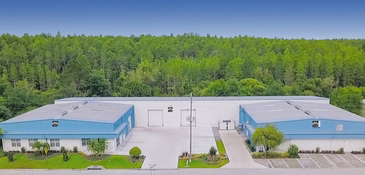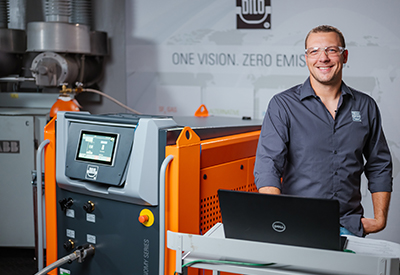Why SF6 Gas Training Is Crucial
SF6 is widely used in gas-insulated switchgear (GIS) and high-voltage electrical equipment because of its excellent insulating properties. However, improper handling of SF6 poses serious risks. It is a potent greenhouse gas with a global warming potential thousands of times greater than CO2 and can linger in the atmosphere for over a thousand years. Additionally, SF6 is approximately five times heavier than air and does not support life, making it dangerous in confined spaces without proper ventilation.
Without adequate training, professionals handling SF6 may unknowingly contribute to environmental damage or expose themselves to toxic decomposition byproducts like sulfur dioxide (SO2) and hydrogen fluoride (HF). Certified training mitigates these risks by teaching best practices for safe handling, leak detection, and gas recovery.
Key Components of SF6 Gas Training
Comprehensive SF6 gas training programs give professionals the knowledge and hands-on experience needed to handle SF6 safely and follow regulations. These programs combine theoretical instruction with practical exercises to teach the best practices for managing SF6 gas.
SF6 Properties and Applications
A key component of SF6 gas training is understanding its properties and applications. SF6 is widely used in high-voltage electrical equipment due to its excellent insulating and arc-quenching capabilities. However, trainees learn that while SF6 is non-toxic in its pure form, it becomes hazardous when exposed to electrical discharges, producing toxic byproducts. Understanding these risks helps professionals handle the gas more cautiously.
Safety Procedures and Risk Prevention
Safety procedures form another critical aspect of training. Participants learn safe handling techniques, including the proper use of personal protective equipment (PPE), ventilation requirements for confined spaces, and emergency response protocols in case of leaks. Since SF6 is heavier than air and can displace oxygen in enclosed spaces, professionals must be trained to avoid asphyxiation risks.
Environmental Impact and Regulatory Compliance
Environmental impact and regulatory compliance are also major topics covered in SF6 training. SF6 is one of the most potent greenhouse gases, with a global warming potential (GWP) thousands of times greater than CO2.
Because of this, stringent regulations govern its use, handling, and disposal. Trainees learn about national and international regulations such as EPA guidelines in the U.S. and F-gas regulations in Europe. They also explore strategies to minimize SF6 emissions, including proper gas containment, leak prevention, and recovery methods.
Leak Detection and Prevention Techniques
Leak detection and prevention techniques are emphasized in training, as even minor leaks can contribute significantly to environmental damage. Professionals learn to identify leaks using advanced tools like infrared cameras, gas analysers, and sniffers, ensuring early detection and prompt corrective action. Regular monitoring and preventive maintenance help organizations avoid costly fines and reduce their environmental footprint.
SF6 Gas Recovery and Recycling
SF6 gas recovery and recycling training teaches professionals how to capture, purify, and store SF6 gas safely, preventing unnecessary emissions. Since SF6 is expensive and environmentally harmful when released, recovering and reusing it is both economically and ecologically beneficial. Trainees practice using gas recovery units to safely extract SF6 from equipment before maintenance or decommissioning.
Maintaining SF6-Insulated Equipment
Maintenance of SF6-insulated equipment is another crucial topic. High-voltage switchgear, circuit breakers, and other SF6-insulated components require careful monitoring to maintain efficiency and safety. Training covers best practices for inspecting gas levels, checking for leaks, and ensuring compliance with operational standards.
Keeping Up with Regulatory and Industry Standards
Finally, regulatory and industry standards ensure that trainees stay up to date with evolving laws and best practices. Keeping pace with changes in regulations and standards, such as those from the International Electrotechnical Commission (IEC) and the Institute of Electrical and Electronics Engineers (IEEE), helps professionals stay compliant and maintain workplace safety.
Programs like the Insulating Gas Management Seminar offer in-depth training on SF6 gas handling, covering best practices and regulatory compliance. These courses provide valuable insights for engineers, technicians, and environmental specialists, ensuring they have the knowledge and skills necessary to manage SF6 responsibly.
Who Needs SF6 Training?
SF6 training is crucial for diverse professionals working in electrical systems, industrial gas management, and environmental safety. Given that SF6 gas is vital for high-voltage applications, those who handle, maintain, or monitor its use need the proper expertise to ensure safety, efficiency, and compliance with regulatory standards.
Electrical Engineers and Technicians
Professionals working with gas-insulated switchgear (GIS) and SF6 circuit breakers require specialized training to:
- Understand SF6 properties and its role in electrical insulation
- Detect and address gas leaks effectively
- Perform maintenance and gas safety inspections
- Minimize risks of equipment failure and safety hazards
Without proper handling, accidental SF6 leaks can cause equipment failure, endanger personnel, and significantly harm the environment. SF6 training ensures that electrical engineers and technicians follow best practices to reduce risks and maintain compliance.
Environmental Specialists
SF6 has an extremely high global warming potential and can remain in the atmosphere for over 1,000 years. Environmental specialists are responsible for:
- Tracking and reporting SF6 emissions
- Ensuring compliance with environmental regulations
- Implementing reduction strategies to minimize SF6 use
- Monitoring gas usage to prevent unnecessary emissions
Because of SF6’s strict regulatory oversight, professionals in this field must be well-trained in emission tracking and reporting requirements.
Maintenance Personnel
Those responsible for handling SF6 gas cylinders, refilling equipment, and conducting inspections need to follow strict protocols to:
- Prevent leaks and accidental gas releases
- Understand gas recovery and recycling methods
- Contribute to sustainable SF6 management practices
Proper training ensures that maintenance teams handle SF6 efficiently and safely while minimizing environmental impact.
Compliance Officers and Regulatory Professionals
With increasing regulations on SF6 use, companies that fail to comply may face fines and operational restrictions. SF6 training helps compliance officers:
- Stay updated on local, national, and international SF6 regulations
- Oversee leak detection and record-keeping processes
- Ensure their organizations meet safety and legal requirements
Compliance officers play an essential role in maintaining legal and environmental standards as they understand SF6 handling procedures and regulatory guidelines.
Industrial Workers in SF6-Dependent Sectors
Industries such as power grids, manufacturing, and scientific research rely on SF6 for insulation and arc-quenching applications. Even workers who do not handle SF6 directly can benefit from training to:
- Recognize potential SF6 hazards in the workplace
- Follow proper emergency response procedures
- Prevent accidental exposure to SF6 leaks
The Value of SF6 Certification
For professionals in these roles, getting certified in SF6 gas handling through an accredited program—like those offered at DILO Academy—ensures:
- Compliance with industry and environmental standards
- Improved workplace safety and efficiency
- A solid understanding of SF6 gas management best practices
Certified training programs provide both theoretical knowledge and hands-on experience, equipping professionals with the confidence to manage SF6 gas while reducing environmental risks.
Understanding the Risks of SF6 Gas
Although SF6 is non-toxic and non-flammable under normal conditions, its improper use can have serious consequences. SF6 is heavier than air, and it can displace oxygen in confined spaces, leading to asphyxiation hazards. Furthermore, if exposed to high temperatures or electrical discharges, SF6 can break down into toxic byproducts, posing severe health risks to workers.
From an environmental standpoint, SF6 is one of the most potent greenhouse gases, contributing significantly to global warming. Governments and regulatory bodies are enforcing stricter controls on SF6 emissions, making it crucial for industries to adopt responsible gas management practices. Effective training helps prevent accidental releases and ensures that professionals follow proper gas recovery and recycling protocols.
When Should You Act?
Acting promptly in SF6 gas handling is crucial for ensuring safety and compliance. Professionals should complete training before working with SF6 to prevent accidents and minimize environmental risks. Additionally, regulations require periodic training and certification renewal for individuals who handle SF6 gas. Delaying training can result in legal and financial consequences, such as fines for non-compliance.
Industries that use SF6 gas should prioritize ongoing education to keep their workforce informed about the latest safety standards and regulatory requirements. Enrolling in an accredited SF6 gas handling training program ensures professionals meet industry standards and avoid costly penalties while promoting a safer, more sustainable workplace.
How to Find Quality SF6 Gas Training Providers
Choosing a reputable training provider is essential for obtaining accurate and industry-recognized certification. When evaluating SF6 training programs, consider the following:
- Accreditation: Look for training programs accredited by recognized institutions such as the International Association for Continuing Education and Training (IACET). DILO is an IACET-accredited provider offering high-quality SF6 gas training.
- Course Content: Ensure the program covers essential topics, including gas handling, leak detection, emergency response, and regulatory compliance.
- Hands-On Training: Practical experience is crucial for learning proper gas handling techniques.
- Instructor Expertise: Trainers should have extensive experience in SF6 gas handling and industry regulations.
- Certification Validity: Confirm that the certification issued upon completion is recognized within the industry.
Programs like those offered by DILO Academy provide both free and paid training options, making it accessible for professionals at different levels of expertise.
The Importance of Timely SF6 Gas Training
SF6 gas training is key to ensuring workplace safety, minimizing environmental impact, and maintaining the reliability of high-voltage equipment. As industries focus on sustainability, trained professionals will be crucial in reducing SF6 emissions and adopting best practices for gas handling.
Enrolling in accredited training programs, such as those offered through DILO Academy, provides professionals with the knowledge and skills needed to manage SF6 safely. Regardless of whether you’re a technician, engineer, or environmental specialist, it’s important to stay updated with ongoing education regarding industry standards while protecting both personnel and the environment.
Taking proactive steps now helps improve health, improve workplace safety, and contribute to a more sustainable future. If your industry involves handling SF6 gas, enrolling in a certified training program is a smart way to stay ahead of regulatory changes and implement best practices.






